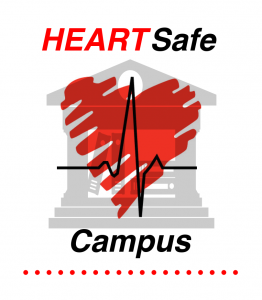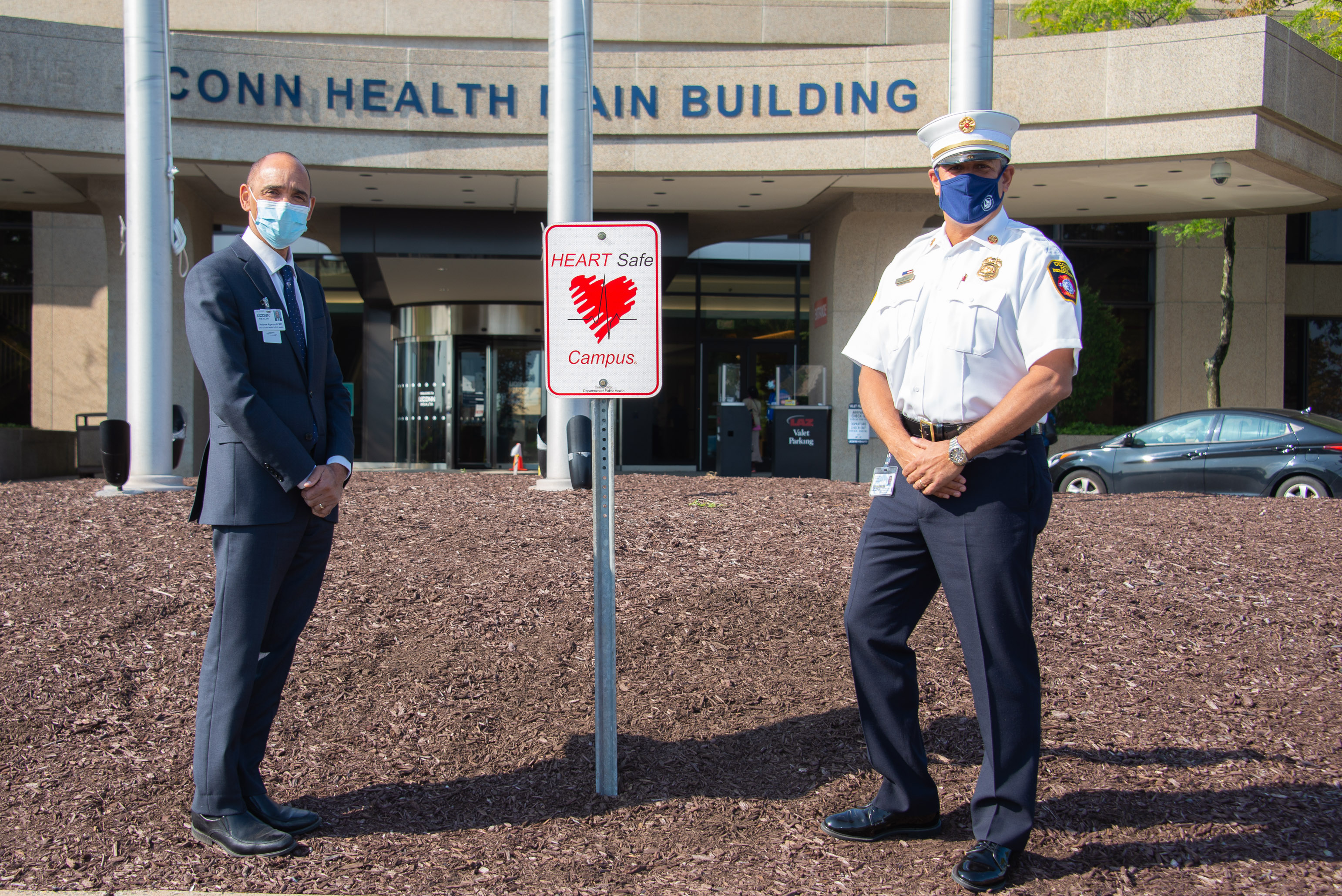UConn Health has been designated the first medical center “HEARTSafe Campus” by the State of Connecticut Department of Public Health in collaboration with the American Heart Association (AHA).
UConn Health follows in the footsteps of the University of Connecticut which last year was the first institution of higher education in the state to earn a HEARTSafe Campus designation.
“We commend you on your efforts to save lives and improve the health of your campus,” wrote Acting DPH Commissioner Dr. Deidre S. Gifford in her letter to UConn Health and UConn Fire Chief William Perez.
“In recognition of the University’s efforts to improve survival from sudden cardiac arrest, UConn Health has met the criteria for designation as a HEARTSafe Campus,” states the official designation by the DPH’s Office of Emergency Medical Services. The three-year designation recognizes UConn Health’s commitment to provide improved cardiac response and care to the staff, students, and visitors of the campus utilizing the “Chain of Survival” of early 911 access, cardiopulmonary resuscitation, defibrillation, and advanced care.

“UConn Health’s HEARTSafe Campus designation is great news for our entire community of patients, employees, students, and visitors,” says Dr. Andy Agwunobi, CEO of UConn Health. “My thanks to UConn Fire Chief Perez and the whole team involved for making our medical center campus even safer.”
This past summer, Agwunobi was instrumental in helping UConn Fire teams ensure UConn Health’s campus became even safer by equipping it with nearly three-dozen new Automated-External Defibrillators (AEDs) in common areas of its buildings and facilities. For a list of AED locations at UConn Health, click here.
“We have 30 AEDs along with Stop the Bleed kits placed throughout UConn Health,” says UConn Fire Chief Perez, who is also associate director of public safety at UConn. “Survival of cardiac arrest events nearly doubles with bystander AED access and CPR. These AED devices being easily accessible by the community is critical to saving more lives.”
The DPH’s OEMS, in collaboration with the AHA, aims to help Connecticut’s towns, workplaces, and now campuses like UConn and UConn Health’s improve the chances of survival to anyone suffering a sudden cardiac arrest. UConn Health is also located in Farmington, which is an accredited HEARTSafe Community.
AED devices, which administer an electric shock through the chest wall to the heart, are proven to improve the chances for individuals to survive a sudden cardiac arrest. UConn Health’s AED initiative is part of the University-wide public access AED program in collaboration with the student organization UConn Rescue, made up of students interested in emergency medical services (EMS) training. By December 2020, over 350 AEDs and Stop the Bleed kits – which include a tourniquet, wound dressing, and shears to stop bleeding during an emergency – are expected to be placed across the University.
Whether you are a UConn Health patient, visitor, employee, contractor, staffer, or student, you can now easily access an AED or Stop the Bleed Kit at any time should an emergency situation arise. Download the free PulsePoint AED App to your cell phone to have at your fingertips the geographic locations of all 30 AEDs accessible on UConn Health’s campus and to be more prepared should a lifesaving opportunity arise. The app also shares the locations of all AEDs across the University of Connecticut’s campuses. Additionally, a UConn Public Safety dispatcher can be reached 24/7 to advise you on the closest AED to your location during an emergency.
Readily available for the public and members of the UConn Health community on the UConn Fire website are short instructional how-to training videos for proper use of AED and Stop the Bleed kits, and other informative online resources including about CPR. The instructional videos demonstrate how to use the AEDs in an easy to follow, step-by-step method, featuring UConn students, staff, and faculty in action. As each AED location also contains a Stop the Bleed kit, the videos also demonstrate how to manage an uncontrolled bleeding emergency using the materials provided. The training videos, released in February, are part of UConn Fire’s lifesaving focused video campaign in partnership with UConn Rescue.



